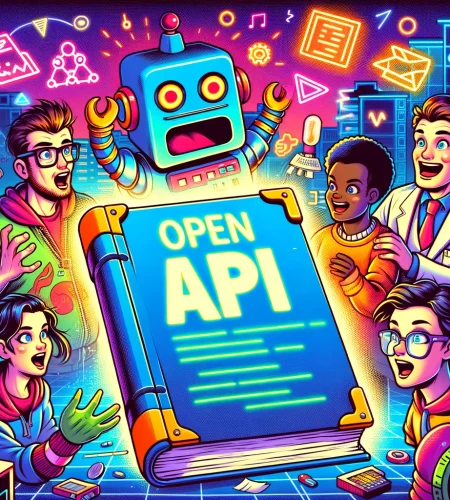OpenAPI, formerly known as Swagger, is a specification for building APIs (Application Programming Interfaces) that allows for the standardization of describing RESTful APIs. It provides a way for developers to define the entire interface of an API in a machine-readable format. This includes endpoints, operation parameters, authentication methods, and other necessary details. Here’s an overview of what OpenAPI offers, along with an example and its benefits compared to other tools.
What is OpenAPI?
OpenAPI Specification (OAS) is an open-source framework that helps developers design, build, document, and consume REST APIs. The specification provides a standard, language-agnostic interface to RESTful APIs, which allows both humans and computers to understand a service’s capabilities without access to source code, additional documentation, or inspecting network traffic.
Example of OpenAPI Specification
Here’s a simple example of an OpenAPI specification in YAML format that describes a basic API to manage a list of users:
openapi: 3.0.0
info:
title: Simple User API
version: 1.0.0
paths:
/users:
get:
summary: List all users
responses:
'200':
description: A list of users
content:
application/json:
schema:
type: array
items:
$ref: '#/components/schemas/User'
components:
schemas:
User:
type: object
properties:
id:
type: integer
format: int64
name:
type: stringIn this example, the OpenAPI document specifies an API that has one endpoint /users that supports a GET operation to list all users. The response is expected to be a JSON array of users, where each user object includes an id and name.
Why Do People Use OpenAPI?
Standardization: OpenAPI provides a standard way of describing RESTful APIs, which means tools and libraries built around the specification can interact seamlessly with any API described using OpenAPI.
Documentation: Tools such as Swagger UI can generate interactive documentation that lets developers and users visually explore an API and try out its endpoints directly in the browser.
Code Generation: OpenAPI specifications can be used to automatically generate server stubs, client libraries, and API documentation, significantly reducing manual coding efforts.
API Governance: Enterprises can enforce API standards and best practices across all their APIs by adopting OpenAPI. This includes consistent authentication, naming conventions, and response handling.
Benefits Over Other Tools
- Interoperability: Since OpenAPI is an industry-standard specification, it offers better interoperability between tools and technologies compared to proprietary or less widely adopted API specifications.
- Tooling: The developer ecosystem extensively supports OpenAPI, including editors, SDK generators, documentation generators, and API gateways.
- Community and Resources: Being an open standard, OpenAPI has a large community and a wealth of tutorials, guides, and third-party tools.
Use Cases
- Design-first API Development: OpenAPI is particularly beneficial in scenarios where teams adopt a design-first approach, designing the API specification before writing any code.
- Microservices Architecture: In microservices environments, OpenAPI helps standardize service interfaces, making it easier to integrate and manage services.
OpenAPI is widely used because it simplifies the development and integration of RESTful APIs, supports a broad range of tools, and helps maintain consistency across large-scale API deployments.
